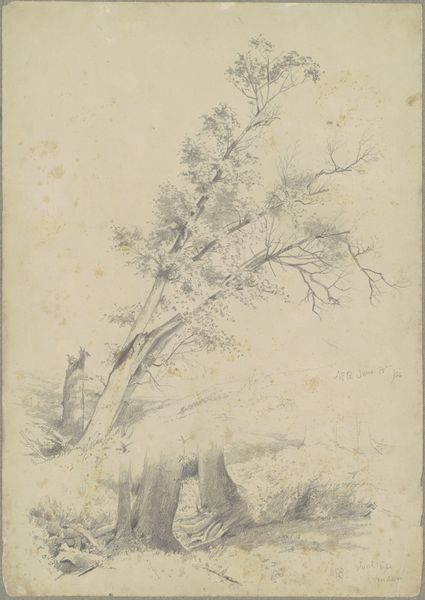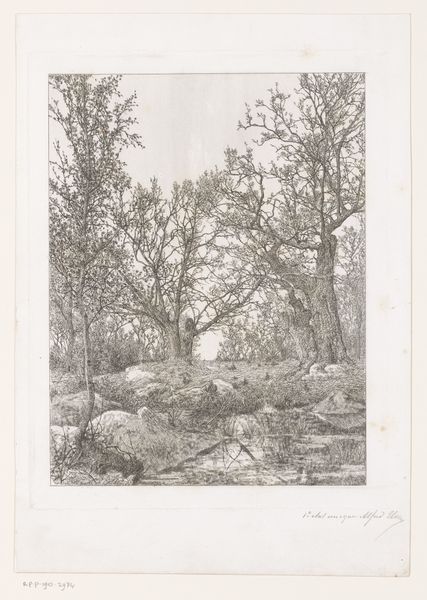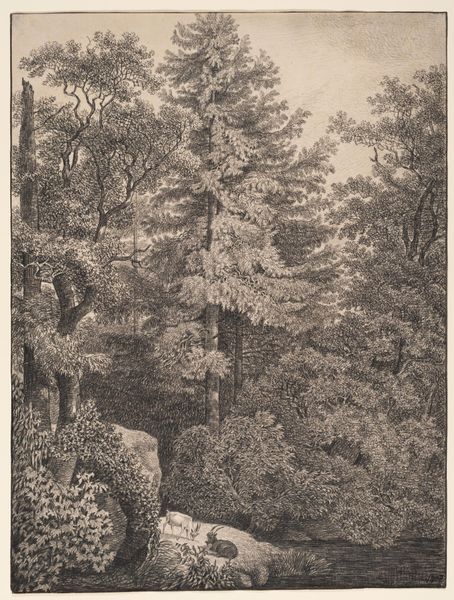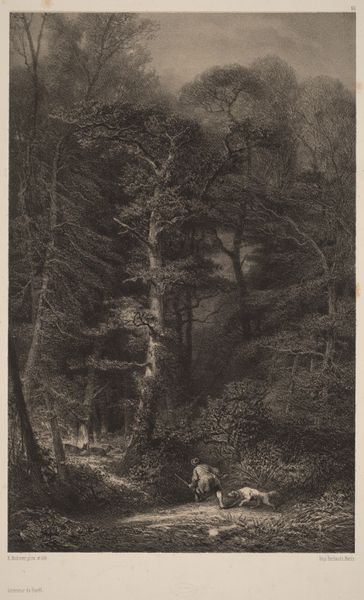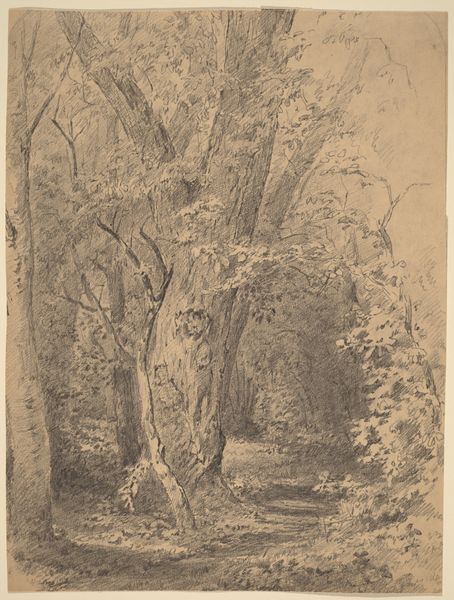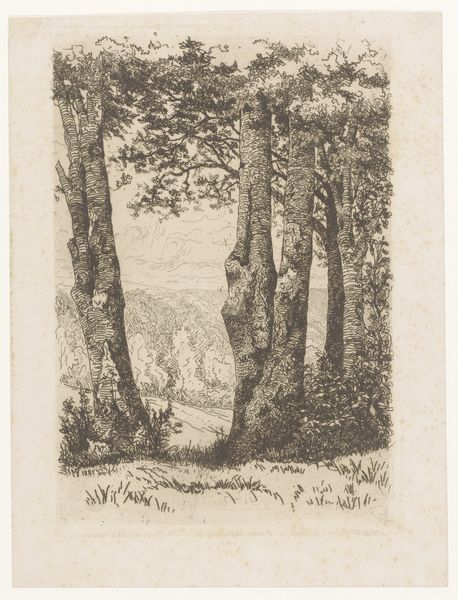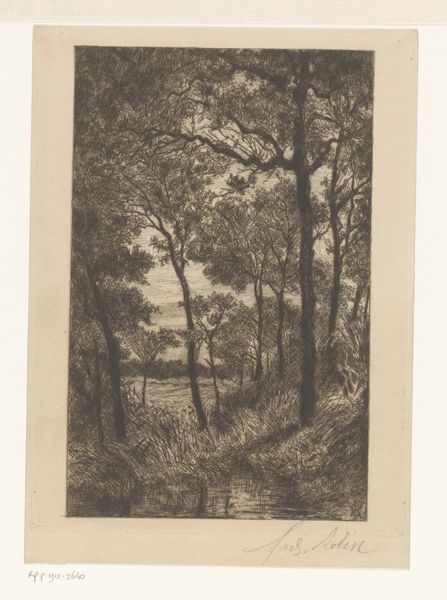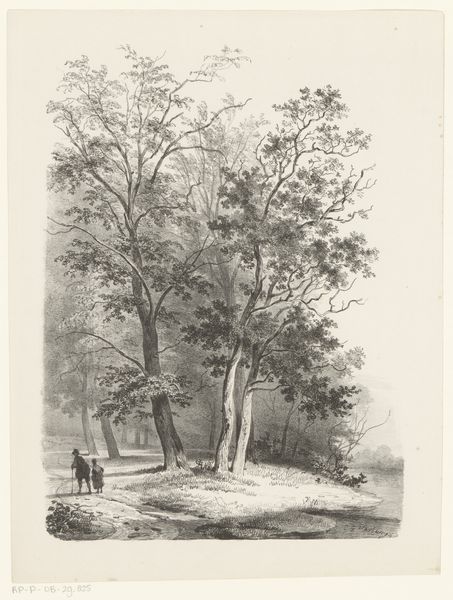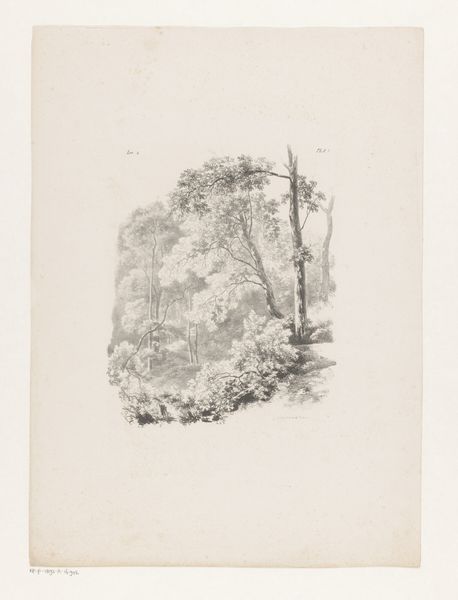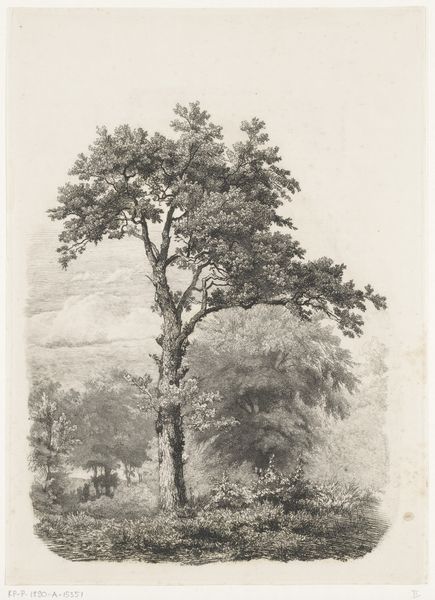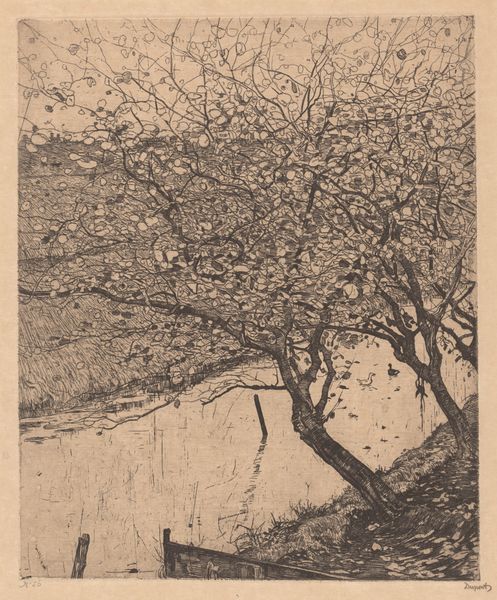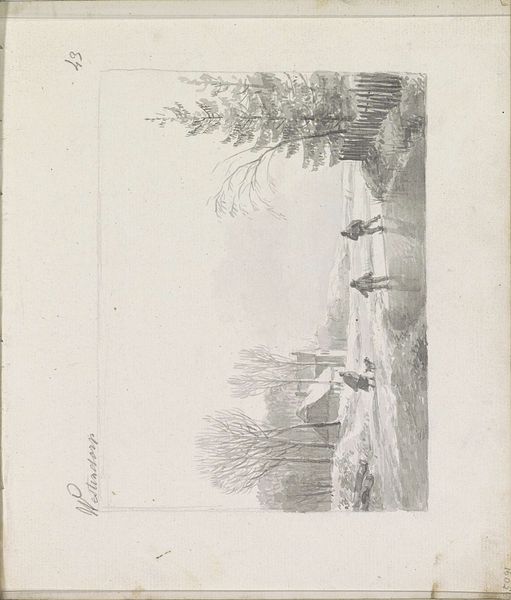
Landskab ved Skarritsø med to høje træer, bøge, i forgrunden. 1844
0:00
0:00
drawing, pencil
#
drawing
#
landscape
#
romanticism
#
pencil
Dimensions: 365 mm (height) x 266 mm (width) (bladmaal)
Curator: Immediately striking. A stillness, a quiet drama almost… I find myself wanting to inhabit that space. Editor: Indeed. This is "Landskab ved Skarritsø med to høje træer, bøge, i forgrunden" by P.C. Skovgaard, dating from 1844. Currently it resides at the Statens Museum for Kunst. It's rendered in pencil, offering an intimate look at the Danish landscape. Curator: Intimate is the perfect word. Looking at the work, it feels like a very direct, unfiltered observation. Considering Skovgaard was working within the Romantic movement, I’m drawn to think about the techniques that underscore the Romantic obsession with nature and feeling. Editor: I agree. And seeing it now, from our vantage point in time, I reflect upon its status. Pencil on paper—it speaks to a preliminary study. An artist working outside. Note how the application reveals such a careful attention to surface, specifically, bark texture and density of the leaves, and how those areas rendered meticulously give way to suggestion further into the background. Do we consider this drawing a completed work? Is it "high art" because it's in a museum, displayed as such, framed? Curator: That tension between sketch and finished artwork is certainly present here, isn’t it? It draws me back to the act of *making*. Looking at the visible strokes, I think about Skovgaard's process and his relationship with these materials. What pencils were available to him? Where did this paper originate? Who prepared it? I see a labor, literally and figuratively, of love. The choice of a more "common" material democratizes the artwork itself—we're invited to study this scene without the barrier of assumed virtuosity. It is about a collective experience: nature, perception, labor. Editor: Precisely! And within that collective experience, let's think about patronage and the art market of 1844 in Denmark. Skovgaard, despite embracing "common" materials, positioned himself carefully within the established art world. What narratives were encouraged and celebrated within these artistic circles, and how might this landscape, created via modest means, reinforce national identity and Romantic ideals about humanity’s connection to land? Curator: So true. Thinking about the interplay between "high" art and "low" craft traditions opens up so much to understanding how the work functions. We must reconsider materiality within the larger cultural framework, not dismiss it because of art history. Editor: A wonderful challenge for those encountering Skovgaard’s artwork today, a true encouragement to appreciate both the hand and the cultural forces that bring art to life.
Comments
No comments
Be the first to comment and join the conversation on the ultimate creative platform.

